What makes a great student placement?
On this page:
When the CSP asked its Twitter followers for examples of great placements to illustrate and celebrate their importance, the responses were wide-ranging. The variety confirms the fact that there is no one perfect placement or setting. What is important is valuing and supporting the skill and expertise of clinical educators who combine their daily responsibilities with ensuring that student placements provide vital learning experience.
For example, as part of the Covid-19 response, some NHS trusts and providers offered innovative and creative placements that not only provided high quality learning environments for students but took some of the pressure off individual educators. Many placements were different to the traditional 1:1 training model, so two or three students worked alongside each other – often virtually - and many were in a variety of settings. The CSP is keen to encourage these models.
Non face-to-face placements
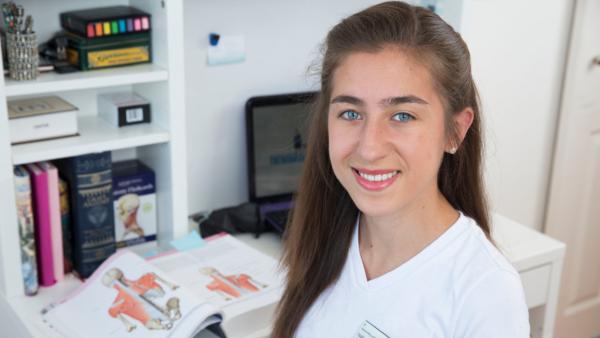
At the Sussex Community NHS Foundation Trust, allied health professional (AHP) leads offered leadership placements so students did two days a week clinical work and spent three days based with the AHP lead working on specific projects.
Sarah-Jane Ryan, principal lecturer, School of Health Sciences at the University of Brighton, said: ‘The response to Covid has brought some exciting innovations. Trusts and organisations have embraced non face-to-face placements and taken students on a journey with them. They’ve learned together and it’s been a really good experience all round.’
Peer-assisted learning
Glasgow Caledonian University’s physiotherapy programmes have already trialled the 2:1, 3:1 and 4:1 placement models used in other countries, supporting educators to facilitate them.
Dr Sivaram Shanmugam, senior lecturer and programme lead for the doctorate in physiotherapy (pre-reg) programme said: ‘Educators often think that 2:1 is double the work; however, experience and research evidences that peer-assisted learning facilitates students to support each other to formulate strategies and solutions, which can potentially free up practice educators.’
Shanmugam has been co-leading a Quality Assurance Agency Scotland project on the impact of the curriculum on students’ mental wellbeing. From his research, one of the top two reasons students self-referred to the University’s Student Wellbeing Team for help with anxiety or other mental health issues was due to placement-related stress. 'If a student on a 1:1 placement is the only one in an established practice team it can be stressful. Two or three students together on a placement gives a shared sense of belonging and offers the opportunity for them to collaborate in terms of clinical reasoning, which is hugely beneficial.'
The CSP is also encouraging a team-based approach to student assessment and is working on a series of resources to support educators, and allow them the flexibility to do other things. The student activities will reflect the fact that physiotherapy is a lifelong learning process, necessitating the skills of reflecting on practice, gathering and analysing information, and thinking creatively to address problems.
Virtual placements
The increase of online patient assessments during the pandemic has made it easy for more than one student to be involved.
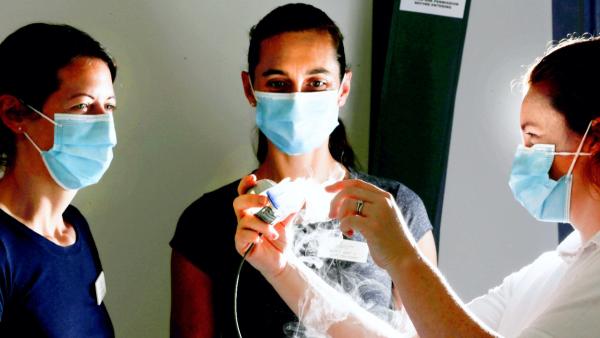
Sara Hill, clinical specialist MSK physiotherapist and student co-ordinator at the Ashford and St Peter’s Hospitals NHS Trust in Surrey, took on her first virtual student at the end of May and is now on her eighth.
She said:'We’re running a lot of virtual classes and the students are working exactly as they would on a placement, by observing initially and then taking a more active role.'
'They’re shadowing physios and ACPs, with a mixture of classes and video consultations. We’re running FCP clinics virtually as well, so they shadow these.
‘We took on a student from Sheffield Hallam at the beginning of lockdown. He got in touch via Twitter to say his placement had been cancelled and could we help. We’re also hoping to offer a placement to a Scottish university student from October. It’s really exciting as it opens up the possibility of taking students from all over the country. They’ll all bring something new, which enriches our team as well.’
Hill added: ‘It’s rewarding to feel that you’re helping a student to graduate and move forward. Virtual appointments are here to stay in some capacity and you’re giving students the opportunity to develop a great and necessary new skill.’
Role-emerging placements
Placements can be made available wherever a physiotherapist works and no setting is too specialist. Equally, students can gain vital experience from role emerging placements, in settings where there is currently no physio involved. Such placements offer students the chance to learn more about the changing healthcare environment, their professional capabilities and potential – and they might even carve out a future role for themselves along the way.
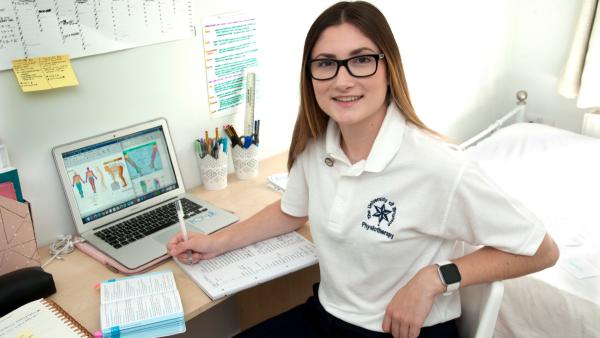
In Brighton, Ryan reports success in schools, where placement students have supported children with additional needs by helping with prescribed interventions and programmes.
‘We’ve also had students supporting student and staff wellbeing, especially in secondary schools. They’ve encouraged students with eating disorders to use exercise positively to help their mental health,’ she added.
Gill Rawlinson, assistant director for practice and development at the CSP, said: ‘Students who have done diverse placements can get snapped up because they bring different skills. Employers want students with transferable skills, who are flexible and adaptable, can communicate, problem-solve and work well in any environment. Students can be nervous about doing non-standard placements but the experience they gain could potentially make them stand out from the crowd'.
Standardised assessment
Until now, the differences in paperwork, procedures and timelines have made some settings reluctant to offer placements to students from an unfamiliar university.
The CSP is working on a standardised approach to assessment that also recognises the increasingly diverse settings where physios are employed. The Common Placement Assessment Form (CPAF), which is close to pilot stage, is the result of several months’ work by educators, universities, regulators and professional bodies across the country.
The CPAF will be used irrespective of a student’s university, learning stage, or the placement setting and will give parity to learning outcomes because all students will have to meet the same criteria. The forms are less prescriptive and give educators the opportunity to also assess students’ professionalism, caring attitude, communication skills and ability to form part of a team.
Rawlinson said: ‘The CPAF and its associated clinical educator resources offer us an exciting opportunity to streamline and simplify the placement process, supporting educators and students. There seems a huge appetite for the CPAF from everyone involved and we hope it will facilitate more placement offers across all sectors.
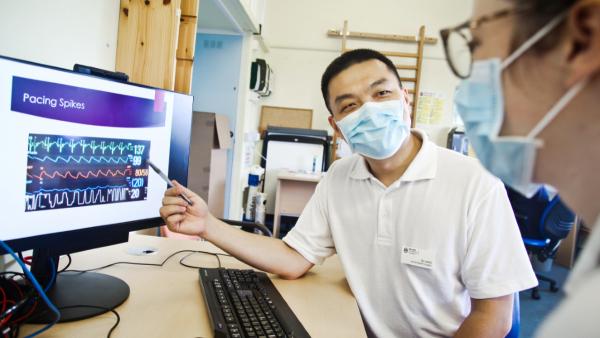
What do students say?
Sam Evans, who is studying for a Bsc Physiotherapy at Bradford University, recently finished a five week placement with Airedale Collaborative Care Team at Airedale General Hospital, after his original placement was cancelled.
‘As a student you have to be open to trying new things and taking every opportunity. I was offered the chance to work at Castleberg Hospital in Settle, as well as in the community. I decided to go for it and I’m glad I did – both were brilliant.’
Although assigned a physiotherapist educator, Sam often worked alongside OTs, nurses and community support workers.
‘My educator guided things but all the MDT had input. They were very supportive: if you feel more relaxed you can be more yourself and more open to discussing things with your educators. If you can’t do that from the off it can hinder your development because you feel inhibited. The practical application of the theory has helped my confidence, too. When I went out with a nurse or OT the physiotherapy side of our visit was my role so I had to do it. The biggest thing I’ve learned is an awareness of other roles. Everyone’s contributing to the care plan so you end up approaching things more holistically.’
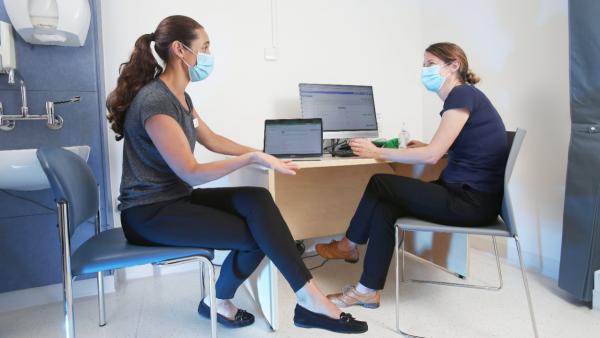
Kate Smedley graduated this summer with a pre registration MSc in Physiotherapy from Oxford Brookes University and is now moving onto a band 5 rotational post at the Great Western Hospital.
Kate had a job as a therapy assistant with the West Berkshire Intermediate Care team and when her original placement was cancelled, they offered her a community placement in order to finish her degree. Kate worked with patients who’d had falls, hip or knee replacements, as well as people with Covid-19.
She said: ‘My team were really supportive and welcoming and my educator went above and beyond to make sure I was exposed to a variety of patients. She encouraged me to work independently where possible. She also challenged me, pushed me and encouraged me.
‘Working at the height of Covid could be emotional and weird, however my educator and the team let me know it as completely normal to feel overwhelmed by what was going on. I felt they gave me the best possible experience, even in such strange times. At the moment it feels like placements are changing so much, but have an open mind and reach out for support if you need it. You get out what you put in.'
Georgia Jones has just completed two months’ placement at the Countess of Chester Hospital ahead of her third year at Manchester Metropolitan University. Georgia’s March placement was cancelled and she had taken a job at a supermarket before being offered a month’s paid placement at CCH, which was extended to two months. She worked with the multi-disciplinary discharge planning team, with patients who had had falls.
She said: ‘I was a bit apprehensive about being in a hospital setting but it was brilliant – you just get on with it. Initially I spent a lot of time observing but by the time I finished I was doing full assessments on my own, which really helped my confidence.
‘It makes you realise how extended the scope of each patient’s care plan is. You also get practical insight into how the NHS works and all the changes it’s going through. It’s a really good learning experience.
‘It taught me to look at patients’ care holistically. I got the chance to speak to everyone involved in the patients’ care – even the consultant, who wanted to hear about my assessments. I now feel able to talk more openly to all the MDT which I never thought would have been possible.’
Top tips for offering placements
- Consider what learning opportunities there are within your team. No setting is too specialist. Placements can be offered wherever a physio works.
- Make students feel welcome and valued. Give them a proper and prompt induction. Show them where they can leave their stuff. Have a computer terminal and log-in ready. Include them in the tea or coffee round. Invite them to sit with you at lunch –even if virtually –and invite them to team WhatsApp groups.
- Let them know who to go to if they need some support, and how to access workplace guidelines and learning resources.
- Get the whole team onboard. Educating the student shouldn’t just be down to one person… everyone has knowledge to share.
- If you show you trust and value them with some responsibility (and support) they’ll repay you in spades
- Students are often great at tech! Ask them to review apps or social media and make suggestions for improvements
- Offer a safe, supportive learning environment, where they’ll have the confidence to ask questions and respond positively to challenge.
- Don’t feel unsettled or threatened by students because they’ve studied more recently. You have the experience.
- Don’t fret if the placement doesn’t go to plan. Involve students in your learning –and remember you can learn from them, too!
- Give students time to reflect on complex patients and experiences.
- If you do have any concerns, don’t let the situation grow. Talk to the student’s university if necessary.
Get the most from your placement
- Don’t think it all has to be patient-facing. Seeing the bigger picture is important, too.
- Introduce yourself to your educator before you start, outlining your experience and any concerns and asking what preparation could be useful.
- Prepare for the placement. Check transport, locations and meeting times. Find out about any ward/s you’re assigned to and the type of patients you’ll be seeing. Brush up on the basics.
- Use a notebook to record any questions or concerns to bring it up with your educator and team. And record your successes,too!
- Be open, ask questions and get involved. Use free time to record your reflections and clinical reasoning, speak to other team members and seek out useful information.
- Make sure you’re clear and agreed on your learning objectives. Are they being met? Educators use marking schemes to assess you so speak to them about any concerns and make sure you know what you need to do to improve your performance.
- Grasp opportunities to work with other members of a patient’s care team so you have a more holistic picture of their care. Your learning experience will be enriched by different perspectives.
- Swap experiences with other students on placement, particularly if they’re from another university.
- Don’t expect every placement to be highly structured and always follow a set plan. The real world is messy and challenging and your placement could well be too.
Student innovations
Student passports
At the University of Brighton, Sarah-Jane Ryan and her team have pioneered the use of student passports to introduce students to their educators before they arrive, and encourage a collaborative approach to a student’s learning in practice. Students detail their experience, a little bit about themselves, identify their learning needs and any concerns.
Students value them as a way of breaking the ice with their educator and say it saves time while negotiating their learning contract. Practice-based educators say it gives useful insight into the student before they arrive, can allow them to put students’ minds at rest about concerns, and gives them time to reflect on the best ways of supporting them.
Ryan said: ‘The passports have made a huge difference in helping students hit the ground running with a good working relationship with their educator.’
Notebooks
Ryan also recommends that both students and educator should have a notebook so they can record the student’s achievements in the front and anything they need to read up on at the back: ‘It encourages a secure learning environment where students can be honest about their experiences and use it as a basis of open discussion and review with their educator.’
Author: Claire White (revised)
Student placements at the CSP
Over September and October 2020, the CSP will have four students on placement. They are working in pairs on projects around placements, digital innovations, research and the common placement assessment form.
One of the pairs' projects is:
What makes a great placement? A student perspective
This projects aims to look from a student’s perspective about the things that matter to students on placement. From this we can establish what resources are needed for students and educators to ensure that placements are high quality and allow students to reach their full learning potential.
Please keep checking the website and Twitter for updates.



































